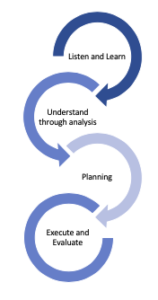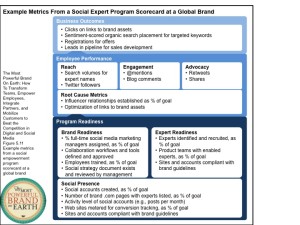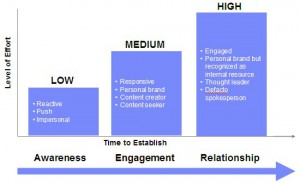While social intelligence plays a critical role in developing an effective B2B social marketing strategy, many marketers make the mistake of instead rushing to deploy tactics and experiment with new tools first.
Don’t make the mistake of overlooking the importance of gathering social intelligence before you develop your social marketing strategy.
The foundation of a social marketing strategy begins with social research. It’s imperative to understand the social eco-system relative to topics important to your business priorities, the on-line behaviors of your target audience, and your brand’s current or relative position and opportunities within it.
Slow and steady wins the race.
The first step to building your social marketing strategy should be taking the time to gather as much social intelligence as possible and harnessing insights from it to build an informed engagement and tactical execution plan. I refer to this first step as “Listen and Learn” of formulating a data-driven strategy and consider it to be foundational to informed strategic decision making. Some questions that may help you frame what you seek to learn would be:
• Where are conversations happening?
• In which venues and domains?
• Who’s leading the conversations?
• Have are these individuals earned a stature of authority on the topic?
• Who’s following and contributing to the dialogue?
• How often are they discussing key topics?
• What is the natural language used?
• Is your brand mentioned? If so, by who? Your customers? Your competitors?
• Are you or your employees a representative voice within these conversations on behalf of your brand?
• What is the sentiment around your brand mentions?
The second step is to create Understanding, this is accomplished through mining and analyzing on-line conversations from social listening and monitoring and primary and secondary research. Building a baseline of understanding from patterns such as topical themes, keywords and phrases that are most used, trends over time, as well as prominent and/or influential people and their connectivity across the social web eco-system. Using insights from analysis allows you to develop informed data-driven strategies, establish new or refine existing goals, identify publics, and determine the need to develop unique strategies for key groups. In this phase, practitioners frequently analyze and evaluate:
• Target Publics (audience segments) to obtain information on decision makers, these could be a mix of current customers, prospective customers, and influencers.
• Market segmentation is the process of dividing a group of potential consumers into different clusters based on characteristics. What a company is then left with are sets of consumers that should respond similarly to marketing strategies.
• Determine if additional social listening and monitoring, and primary or secondary research is necessary to better understand audiences, trends, by conducting additional market analysis, to further examine opinion, behaviors, and attitudes.

Harness the findings, then use them to inform your social marketing strategy and the best mix of tactics is considered the third phase and is focussed on planning. Using the understanding of the natural language expressed in social dialogue, attributes, behaviors and buying patterns of target audience ascertained from the previous learn and understand phases, identify the specific target audience(s) that must be reached to achieve the goal and objectives of the plan. Each target audience will have specific messaging, strategies, channel and communications preferences that must be considered and applied to the tactics developed. You may develop primary messages or secondary messages for each audience. Also, this is a good time to set benchmarks. Then use them for measuring relative change over time as you implement and evaluate the effectiveness of your tactical execution plan.
Finally, evaluate the tactical execution to determine content performance in terms of the content types and the channels in which the content was distributed, will determine which channels reached the target audience more effectively and once reached which content forms attained higher engagement and re-sharing. This is also the time to focus on evaluating the effectiveness of the execution and engagement led by influencers, employees, and brand advocates who were equipped to share information across all channels. Which of them is performing most effectively? Which is accomplishing the goals aligned to the strategy? Are any under performing? If so, what remediation plan needs to be instituted?
It is important to determine a cadence for harvesting insights, conducting analysis and reporting results. Providing a summary of and clearly articulating performance is key to helping stakeholders understand results. This is also your opportunity to gain their confidence and support to continue optimizing your data-driven strategies. Here’s an example of KPIs that you may construct to demonstrate program performance:






